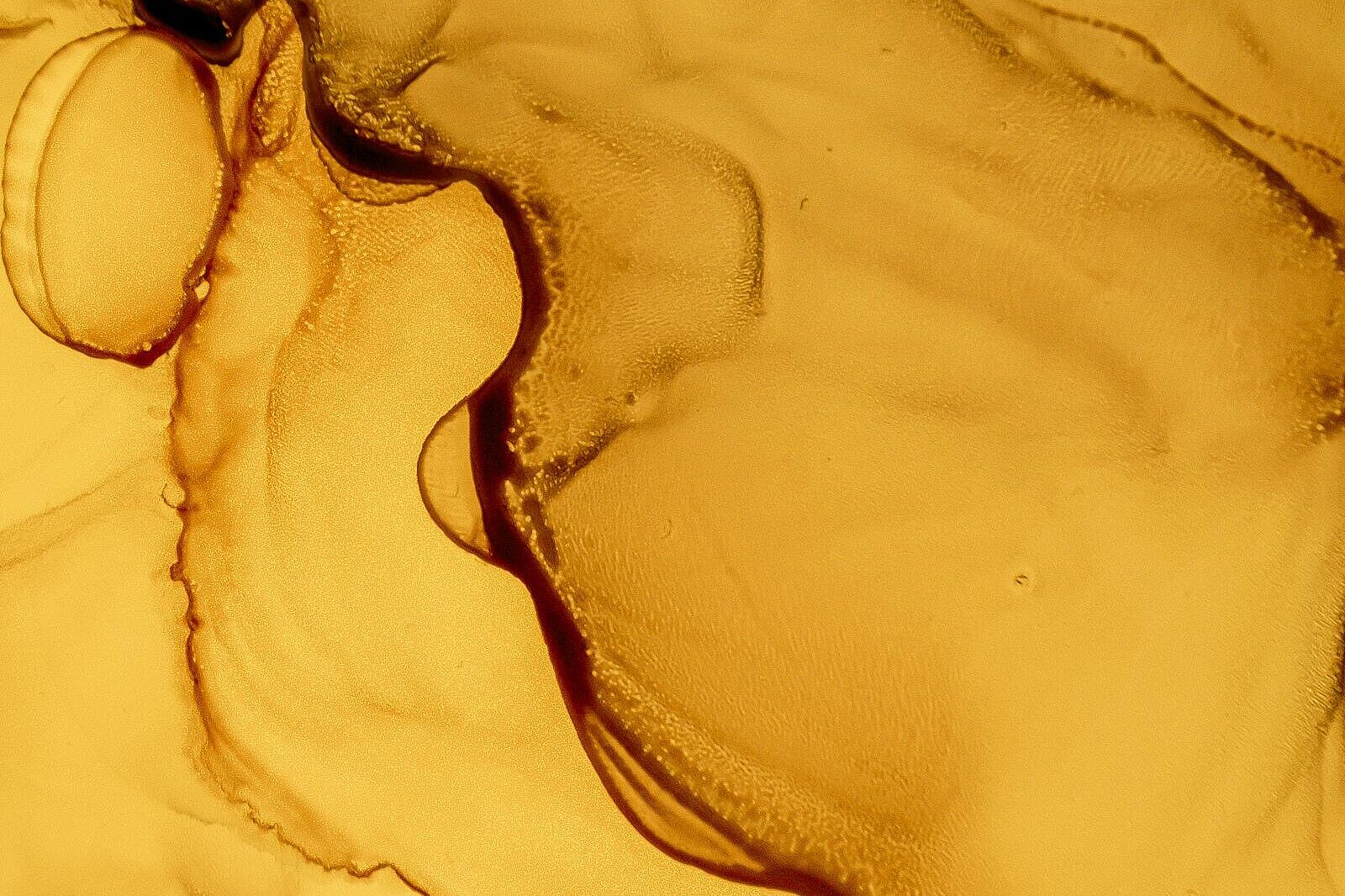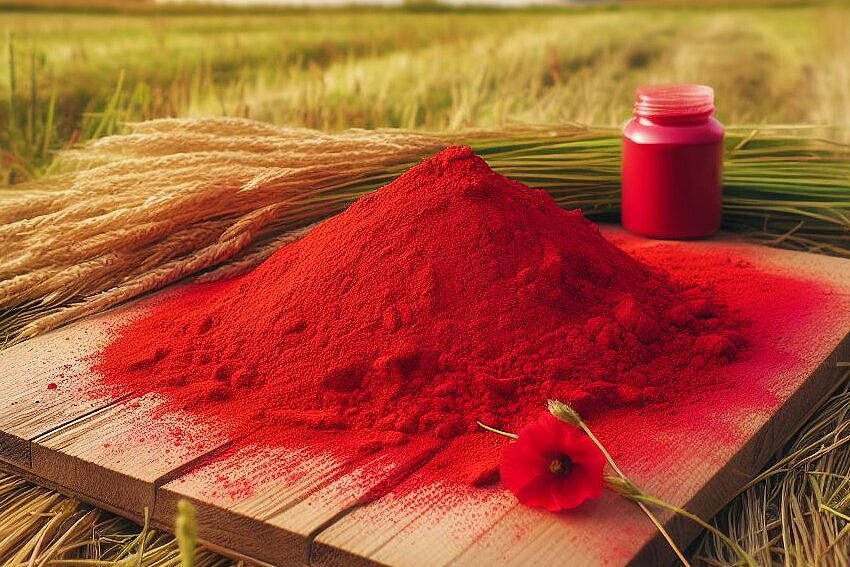Brilliant blue FCF

What is brilliant blue FCF?
Brilliant blue FCF is a reddish-blue powder that is soluble in water. It has the chemical formula C37H34N2Na2O9S3 and a molar mass of 792.85 g/mol. It consists of two benzene rings linked by a double bond and two further benzene rings, each of which carries an ethyl group and a sulphonic acid group. The color of brilliant blue FCF depends on the pH value of the solution. At neutral pH it is blue, at acidic pH it is green and at even more acidic pH it is yellow. At very acidic pH values, the dye decomposes and loses its color.
How is brilliant blue FCF produced?
Brilliant blue FCF is produced from the sodium salt of 2-formylbenzenesulfonic acid (also known as 2-sulfobenzaldehyde) and 3-{[ethyl(phenyl)amino]methyl}benzenesulfonic acid. These two compounds are combined in a condensation reaction in which water is split off. The product is the disodium salt of brilliant blue FCF. There are also other salts of brilliant blue FCF that are approved as food colorants, such as the calcium, ammonium or potassium salt. There is also an aluminum lacquer of brilliant blue FCF, which is used as a coating for cheese or sausage.
What are the advantages of brilliant blue FCF?
Brilliant blue FCF has several advantages as a food colorant:
- It is vegan and halal, as it contains no animal ingredients.
- It is water-soluble and can therefore be easily excreted from the body.
- It can be mixed with other colorants to create different shades, such as green with tartrazine (E 102) or violet with carmine (E 120).
- It is relatively inexpensive and readily available.
What are the disadvantages of brilliant blue FCF?
Brilliant blue FCF also has some disadvantages as a food colorant:
- It is not very resistant to heat and light and can therefore lose its color or decompose.
- It can trigger allergies or intolerances, especially in people with asthma or eczema.
- In high doses, it can be harmful to health by affecting genes or the energy balance of cells.
- It may contain aluminum without this being stated on the label. Aluminum is suspected of promoting neurological diseases such as Alzheimer's or Parkinson's disease.
- It is only approved for certain foods and must not be consumed above a certain amount per kilogram of body weight per day.
How does brilliant blue FCF affect dogs?
Like humans, dogs are sensitive to the effects of brilliant blue FCF. They can also develop allergies or intolerances if they eat food containing this dye. In addition, high doses of brilliant blue FCF can lead to symptoms of poisoning, such as vomiting, diarrhea, cramps or respiratory distress. In extreme cases, it can even lead to death. Dogs should therefore not be given food containing brilliant blue FCF or at least be very careful not to ingest too much of it.
Brilliant blue FCF is a blue food colorant used in the food industry to color certain products. It has some advantages, such as its solubility in water, its vegan nature and its color variety. However, it also has some disadvantages, such as its low resistance to heat and light, its allergenic effect, its health hazards and its limited approval. Brilliant blue FCF is particularly harmful to dogs and can lead to severe poisoning. For this reason, dogs should not be given food containing brilliant blue FCF or at least great care should be taken to ensure that they do not ingest too much of it.
Properties 6
Are you looking for other ingredients with a specific property?
Just click on them to find more.
If you notice any signs of hypersensitivity or poisoning in your dog, you should see your vet immediately. We are not a substitute for a vet, but we try to be as accurate as possible. Every dog reacts differently and we recommend you get a second opinion or consult your vet if in doubt.
Stay healthy and take good care of your four-legged friend!😊
Similar to Brilliant blue FCF
Tartrazine is a yellow to orange dye that is added to foods, cosmetics and medicines to give them an appealing color. It is obtained synthetically from coal tar, a black and smoky substance that is...
Allura red is a synthetic dye made from petroleum. It belongs to the azo dyes, which form a large group of dyes that contain an azo bridge (-N=N-). Allura red has the molecular formula C18H14N2O8S2...
Indigo carmine, also known as indigo carmine or by its chemical name 5,5'-indigodisulfonic acid sodium salt, is a water-soluble dye that was traditionally extracted from natural sources but is now...
Sun yellow FCF has some disadvantages and risks, especially for dogs. It can trigger allergic reactions such as skin rashes, itching, breathing difficulties or asthma. It can also affect the...



